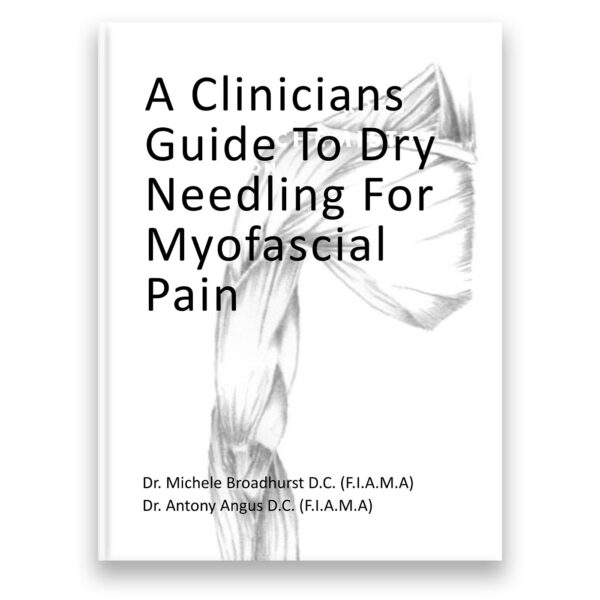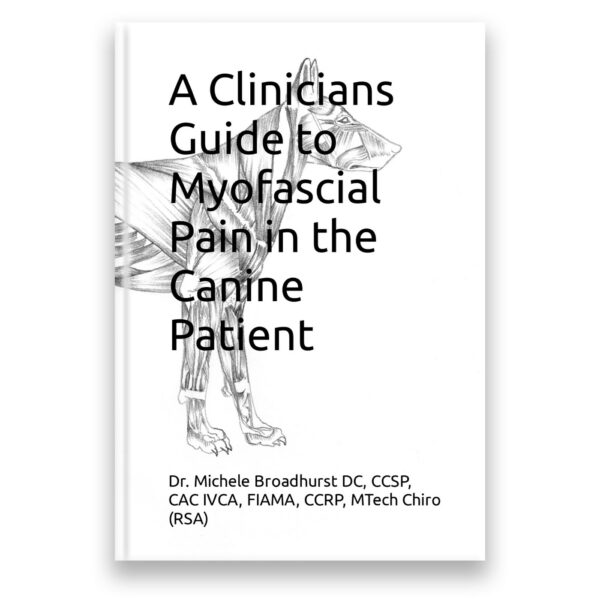Your cart is currently empty!
Book – A Clinicians Guide to Myofascial Pain in the Equine Patient
Available on Amazon for Kindle and Paperback edition, and on Apple Books.Myofascial pain is a term that has been bandied about for many years, but it is often unclear to people exactly what it means or how to treat it. Fortunately, veterinarians, physical therapists, chiropractors and other practitioners are at last starting to acknowledge the…
Available on Amazon for Kindle and Paperback edition, and on Apple Books.
Myofascial pain is a term that has been bandied about for many years, but it is often unclear to people exactly what it means or how to treat it. Fortunately, veterinarians, physical therapists, chiropractors and other practitioners are at last starting to acknowledge the importance of myofascial pain syndromes and collaborating on treatment. This manual is an essential resource for anyone who is interested in treating pain in their respective practices.
For the veterinarians who spent only a few weeks in college learning about the musculoskeletal system and wants to understand it better and treat their patients more effectively; for the veterinary dentist who is struggling to help patients with temporomandibular joint dysfunction; the physical therapist who feels like massage isn’t quite cutting it; and for the chiropractor who can’t understand why their adjustment isn’t holding and the patient is still suffering. No one has time in their busy offices to lug out an enormous textbook and start paging through it for 15 minutes while their patient and client sit waiting.
This has been designed as a quick reference text for those practitioners that have a patient presenting with a myofascial pain syndrome and need a quick recap on which muscles could be causing it, where those trigger points are, how to treat it and what to do post-treatment. The author has more than 16 years of practical hands-on experience and has worked on thousands of patients (human and animal) to bring you the most valuable and concise information that you will need to be successful in dry needling in your practice.We begin with an overview of the relationship between muscle and trigger points, as well as fascia and its role and function in the body. This is a useful review about the functionality, integrity and uses of muscles, fascia and the trigger points that form and reside in them.
The palpation chapter is one of the most important chapters in this book, as most practitioners are deficient in this skill. There are fundamental tools in this chapter that will help you quickly and effectively, master palpation. The diagnosis and treatment chapter outlines the fundamentals in evaluating and treating patients with myofascial pain syndromes.
Irrespective of your speciality- veterinarian, physical therapist or veterinary technician, the principles for correctly diagnosing and treating myofascial pain syndromes and myofascial trigger points remain the same. Needling use and technique will give you a basic foundation on what and where to needle as well as the how. This chapter incorporates different needling techniques as well as post-treatment protocols. It teaches you how to be safe, and what contra-indications are important to keep in mind when evaluating a patient for dry needling.We cover the differences and similarities between acupuncture and dry needling.
A brief discussion will help you resolve the differences between these two treatment protocols. Other modalities for eliminating MFTPs are discussed briefly. Treating patients is not a ‘one size fits all’ scenario, therefore one must be aware of alternative treatments that are beneficial when dealing with myofascial pain and trigger points. We have touched on the efficacy of some of these treatments but have not gone into great detail.Needle safety and consideration covers everything you need to know regarding clean needle technique and how to be safe when working with needles.
Each muscle that is discussed covers the attachments, action, how to palpate the muscle, the relevant pain pattern for that specific muscle, needling technique, causative and perpetuating factors and accessory/associated trigger points relating to that muscle. In conclusion, this manual is for the practitioner who wishes to deepen their understanding of myofascial pain syndromes and wants to help their patients in a quick and incredibly effective manner.





